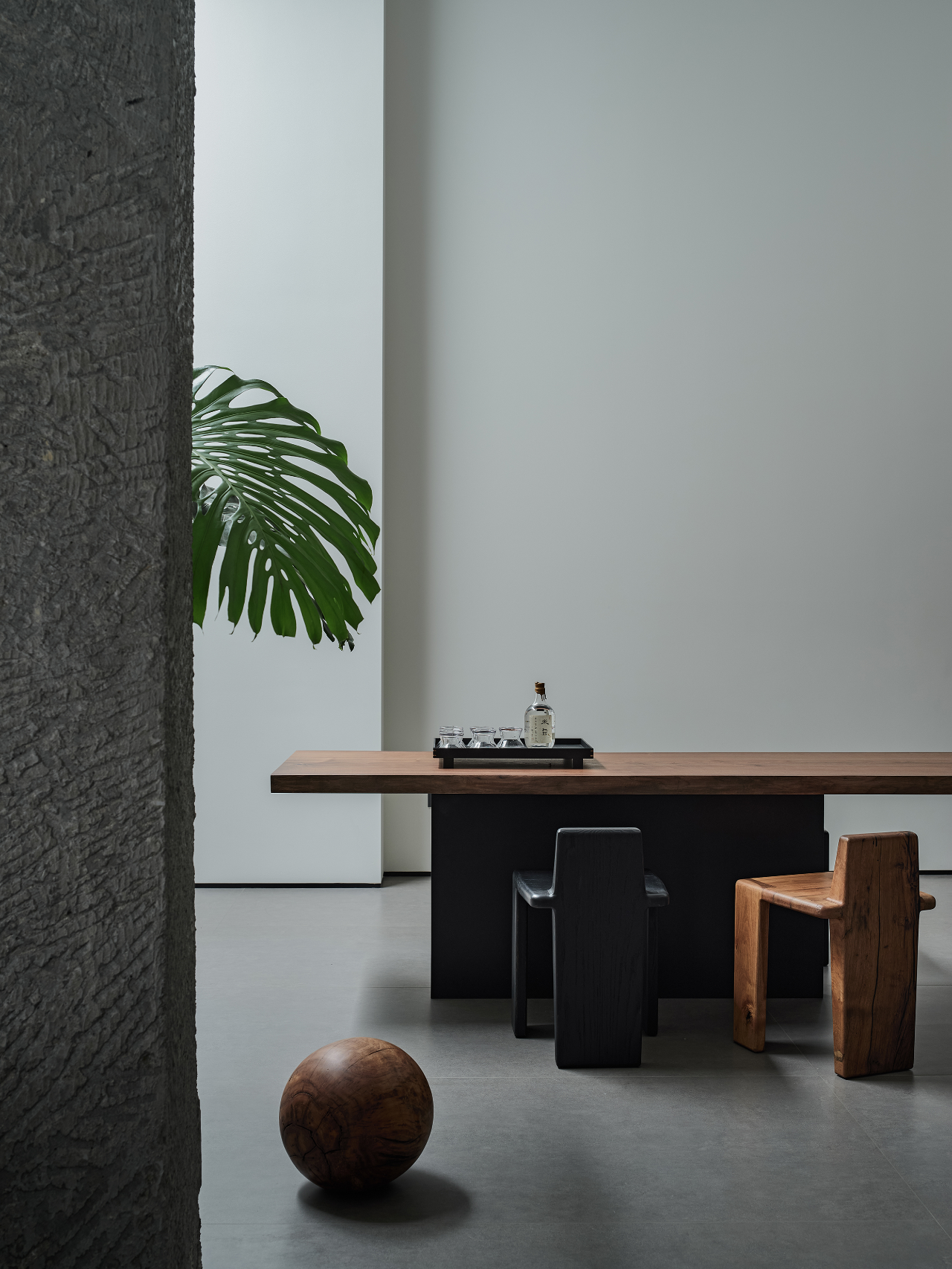Embera Atrato Medio School Planb arquitectos
2014-10-16 01:00
© Alejandro Arango
(Alejandro Arango)
_mg_9472colegioember%c3%a1.jpg)

架构师提供的文本描述。到哥伦比亚安蒂奥基亚省的Vigia del Fuerte镇,你只能乘一小时的飞机从麦德林市或直升机抵达,也只能乘坐七天的船沿着阿特拉托河到达。它的人口来源是非洲人后裔、梅斯蒂佐斯人和Embera土著人民的混合。最后这些人住在附近的社区周围的小城市地区,位于河边。这所新学校的目的是在他们生活、睡觉、从小学到高中接受教育的一年中,接受这些土著社区的短期和固定的时间,而不必永久离开他们的部落。
Text description provided by the architects. To the township of Vigia del Fuerte, which is part of the department of Antioquia in Colombia, you can only arrive flying, on a one-hour flight with a small plane from the city of Medellín or helicopter, or in a seven-day boat trip along the Atrato river. The origin of its population is a mix of African descendants, mestizos and Embera indigenous people. These last ones live in nearby communities surrounding the little urban area located on the riverside. The roll of this new school is to receive these indigenous communities for short and constants periods of time throughout the year in which they live, sleep, get fed and receive education from elementary to high school programs without having to leave their tribes permanently.
Floor Plan










该地区的城市、社会和生态条件非常复杂:每年一次,在季风季节,河流水位上升并淹没该镇几个月,因此,大多数建筑物都是高楼,通过一系列基本的木通道相互连接。在季风季节,沟通是通过查鲁帕斯(一种传统的渔民的小木船)进行的,当道路消失时,人们可以用它从一个地方移动到另一个地方。由于武装冲突,哥伦比亚农村地区的疾病和暴力也影响到这一社区的正常发展。
The urban, social and ecological conditions of this location are very complex: once a year and during the monsoon season the river level rises and floods the town for several months, for which reason most of the buildings are stilted constructions and are connected to one another through a series of rudimentary wooden gangways. During the monsoon season communication is done via chalupas – a traditional fisherman’s small wooden boat- with which the people can move from one place to another when the roads disappear. Ailment and violence in the countryside areas of Colombia due to armed conflict have also affected the regular development of this community.
© Alejandro Arango
(Alejandro Arango)
_mg_9172colegioember%c3%a1.jpg)



新校舍位于该镇的北侧,靠近热带雨林。它插入在一个正交和拉长的城市网格,占据了绝大部分的用地面积,并与城镇的走道网在一个单一的平面图。这所学校被认为是一条有盖的、灵活的街道,可以从一边到另一边使用和交叉,并由两条平行的教室、卧室、办公室、浴室和服务支撑。该提案的目的是使建筑的用途和材料具有渗透性,并与当地的天气和农村环境联系在一起。
The new school building is located in the northern side of the town close to the rain forest. It is inserted in an orthogonal and elongated urban grid, occupying the vast majority of the utile area of the site and engaging with the gangway net of the town in a single floor plan. The school is conceived as a covered and flexible street that can be used and crossed from one side to the other and is supported by two parallel strips of classrooms, bedrooms, offices, bathrooms and services. The proposal aims to be permeable architecture regarding uses and materials articulated to the local weather and rural context.
© Julian Castro
(朱利安·卡斯特罗)


地面阻力差,迫使该建筑成为一座非常轻的建筑,建于地下15米以下的50多个微型灌注桩上,支撑着一个由混凝土柱和梁组成的高耸结构板,这些混凝土柱和梁的抗水能力和河水泛滥水平之上。从混凝土楼板向上,钢结构,使其更轻,但也抗高湿度的热带潮湿的生态系统。对于立面来说,由于它们是濒危物种,所以避免使用本土木材,而是决定使用在麦德林附近地区种植的免疫松木,然后乘船运往现场。屋顶是热声半透明和不透明金属瓦的交替。由于难以到达该镇,所有物资的运输都受到重量、大小、预算和可用性的限制。
The poor resistance of the ground forced the construction to be a very light weight building founded on more than 50 injected micro-piles with a medium length of 15 meters beneath the ground level supporting a stilted like structured slab of concrete columns and beams resistant to water and above the overflowing level of the river. From the concrete slab up, the structure is raised in steel to make it lighter but also resistant to the high humidity of the tropical humid ecosystem. For the facades the use of native wood was avoided due to the fact that they are endangered species and instead decided to use immunized pine wood grown in areas close to Medellín and transported by boat to the site. The roof is an alternation of thermo- acoustic translucent and opaque metal tiles. All the transportation of materials was planned with a lot of restriction of weight, size, budget and availability due to the difficulties to reach the town.
© Alejandro Arango
(Alejandro Arango)




_mg_9165colegioember%c3%a1.jpg)



_mg_9181-editcolegioember%c3%a1.jpg)







_mg_9472colegioember%c3%a1.jpg)

_mg_9466colegioember%c3%a1.jpg)

_mg_9201colegioember%c3%a1.jpg)





_mg_0086colegioember%c3%a1.jpg)



_mg_9978colegioember%c3%a1.jpg)

_mg_9778-editcolegioember%c3%a1.jpg)

_mg_9196colegioember%c3%a1.jpg)





_mg_0148colegioember%c3%a1.jpg)







_mg_9172colegioember%c3%a1.jpg)













Architects Plan:b arquitectos
Location Vigía del Fuerte, Antioquia, Colombia
Category Dorms
Project Managers Felipe Mesa, Federico Mesa
Area 1305.0 m2
Project Year 2014
Photographs Alejandro Arango
Manufacturers Loading...
























